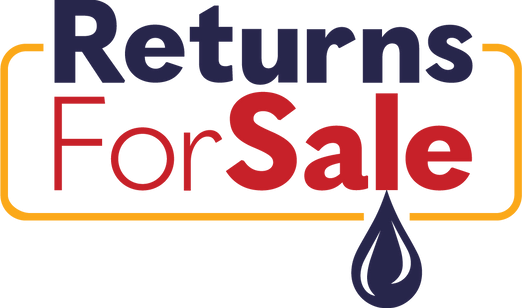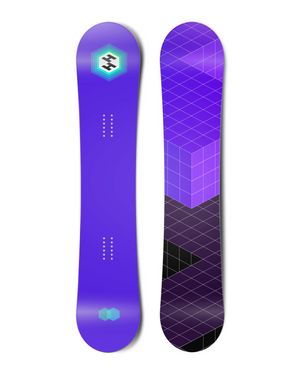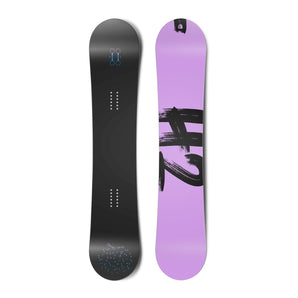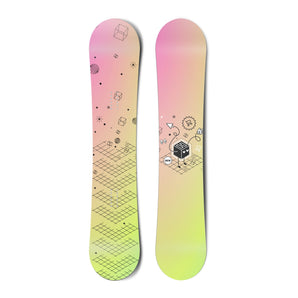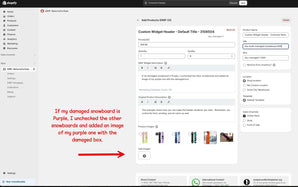You might think your losses are just the cost of doing business, but when you position your returns on Shopify strategically, you can increase profit margins, reduce loss, and build yourself up for the future.
Regardless of your niche, every eCommerce business owner has the relentless burden of managing returns. Of course, it’s amazing to make a sale, but if that sale gets sent back, it’ll need to get restocked, relisted, or even replaced, it can sometimes cost more than it’s worth. That’s why it’s so important to have a strategy in place not to just manage your returns but also to resell them.
The cost of returns for retail businesses
According to the National Retail Federation, over $425 billion worth of products were returned in 2020, which makes up about 10% of total retail sales. The cost of returns isn’t just limited to the value of products though. In fact, reverse logistics cost businesses over $100 billion dollars in the span of only one year!
Customers return products for all types of reasons, and many of them don’t have anything to do with the product being incorrect or defective! However, you might not be able to resell these items as new even if they haven’t been used by anyone yet. Simply unboxing an item will reduce its shelf price and put an immediate damper on your earnings.
Benefits of selling your returns on Shopify
When you sell returns directly through Shopify, you can be in complete control of your earning potential. Do you know how many returns end up being discarded in when they’re in relatively new condition? Businesses are essentially throwing away profits based on the assumption that their products won’t be able to sell. However, how can you say that if you have yet to try?
Many eCommerce business owners report needing help with returns that can’t be sold as new. To reduce the economic burden of your returns, you need to retain as much value as possible.
If you sell any condition products you’ll have a better shot at reducing your losses compared to if you didn’t sell them at all, or sold them at a heavy discount to wholesalers. You’ll always get the most value for your products when you resell them directly to your customers.
What is a Dutch auction?
Most consumers are familiar with online auction sites like eBay and get the concept of bidding, but did you know you can implement other auction strategies in your online store? For example, one great loss-reduction strategy is a Dutch auction.
In a Dutch auction, the selling will start out with the highest buying price and continue to reduce it until a buyer is found. Since people won’t want to wait too long in case the item gets snatched up by someone else, the theory is that you’ll still wind up selling items for a value closer to what you wanted.
In the context of eCommerce, listing items for a Dutch auction involves the DRIP pricing method.
What is a DRIP?
Let’s say you start out with a discount of 10% and introduce a drip rate of 1%. Instead of discounting from the original value, you take that percentage out of the latest price. If you sell an item within 10 days, you’ll only be selling at a total discount close to 20%, rather than offering say, 30% or an even higher reduction from the start.
Essentially, the market decides the price since there’s plenty of time for buyers to get in at different pricing increments.
One great feature of this technology is that if you have multiple items in stock and one is purchased, the price will go back up to the original beginning discounted price. This will prevent previous buyers from seeing the product at a higher discount soon after they made their purchase. If anything, they’ll be thrilled that they got in when they did!
Why you need an alternative to liquidation
Chances are, you’re familiar with the liquidation process and aware of what a dent it puts in your profit margins. The idea behind DRIP is that you can taper your losses over time and increase your profit margins. When you use the DRIP method, your pricing will never reach zero, it’ll simply drop by 1% of the value from the previous day. This prevents you from incurring unnecessary losses or underestimating what you can get for your product.

*Image: DRIP schedule at a 1% daily DRIP for a return and an 80% floor discount.
How to integrate return sales with your Shopify store
It’s all well and good to know the best strategy for selling your returns direct on Shopify, but chances are you already have plenty of things to get done throughout your day. That’s why you need the right digital tools to automate this process for you, allowing you to monitor everything without thinking twice, and observing how much better your returns are doing now that you have a dependable strategy in place.

If you want to start bringing in savings and getting more for your returned inventory, it’s as simple as downloading the DRIP: returns for sale app. Not only does it give you peace of mind as a business owner, but it allows nearly every employee to participate and more efficiently manage their own workflows. Warehouse employees can easily relist items as soon as they come back, while back office staff can set discounts and drip rates to get the process moving quickly and efficiently.
At the end of the day, when it comes to eCommerce, it’s all about maintaining control and managing your resources effectively, both in business at the office and in logistics on-site. When you implement tools like the DRIP app, you lessen your own burden and make it easier for your team to carry out their responsibilities and meet and exceed your goals.
Maximizing Profits with Dutch Auctions for Returns on Shopify
Every eCommerce business grapples with the issue of returns. While making a sale is exhilarating, dealing with returns can be equally disheartening due to the associated costs and logistical headaches. But what if there was a way to transform this challenge into an opportunity? By leveraging a Dutch auction strategy on your Shopify site, you can not only recoup losses but also potentially increase your profit margins.
Understanding the Cost of Returns
In 2020 alone, over $425 billion worth of products were returned, accounting for roughly 10% of total retail sales (National Retail Federation). The logistical cost of managing these returns—often exceeding $100 billion annually—highlights a critical area where eCommerce businesses bleed money. Importantly, many returns are not due to defects but simply because the customer changed their mind, which presents a unique opportunity to resell these items at a reduced cost without significant loss of value.
Why Sell Returns on Shopify?
Selling returns directly through Shopify puts you in control of the pricing and sales strategy. A significant portion of returned goods are in near-new condition, discarded or heavily discounted by businesses assuming they can't be resold at a fair price. This assumption leads to unnecessary profit loss. Direct sales to customers allow for better recovery of value from returned items, bypassing wholesaler discounts and avoiding complete write-offs.
What is a Dutch Auction?
Unlike traditional auctions where prices ascend, a Dutch auction starts high and decreases until a buyer accepts the price. This method is ideal for eCommerce, where immediate purchase incentives can drive quicker sales at prices closer to desired values.
Introducing DRIP Pricing
The DRIP (Discount Reduction Incrementally Priced) model enhances the Dutch auction by starting with a moderate discount and reducing the price incrementally over time. For instance, starting with a 10% discount and reducing the price by 1% daily allows items to be sold within 10 days at a discount of about 20%, rather than starting at a steep 30% or more. This method ensures the price doesn’t drop too swiftly, giving multiple buyers a fair chance to purchase at various price points.
Benefits of DRIP Over Liquidation
Liquidation severely impacts profit margins, often resulting in losses. The DRIP method, by contrast, gradually decreases prices, preventing them from plummeting to zero and allowing you to better control the final sale price. This incremental approach helps taper losses and increase profit margins over time.
Seamlessly Integrating DRIP with Shopify
To effectively manage Dutch auctions and DRIP pricing, utilizing the right digital tools is essential. The DRIP: returns for sale app integrates seamlessly with Shopify, automating the resale process of returned items. This not only saves time but also enhances the efficiency of your workflow, from warehouse staff relisting returns to back-office managing pricing strategies.

Implementing a Dutch auction and DRIP pricing model on your Shopify site is a strategic approach to handling returns. By controlling the resale process and pricing, you can significantly reduce losses and potentially increase profits. With the right tools and strategies, you can transform the burden of returns into an opportunity for growth and improved customer satisfaction.
Ready to enhance your return management strategy? Explore the DRIP: returns for sale app on Shopify and start maximizing the value of every return today.

